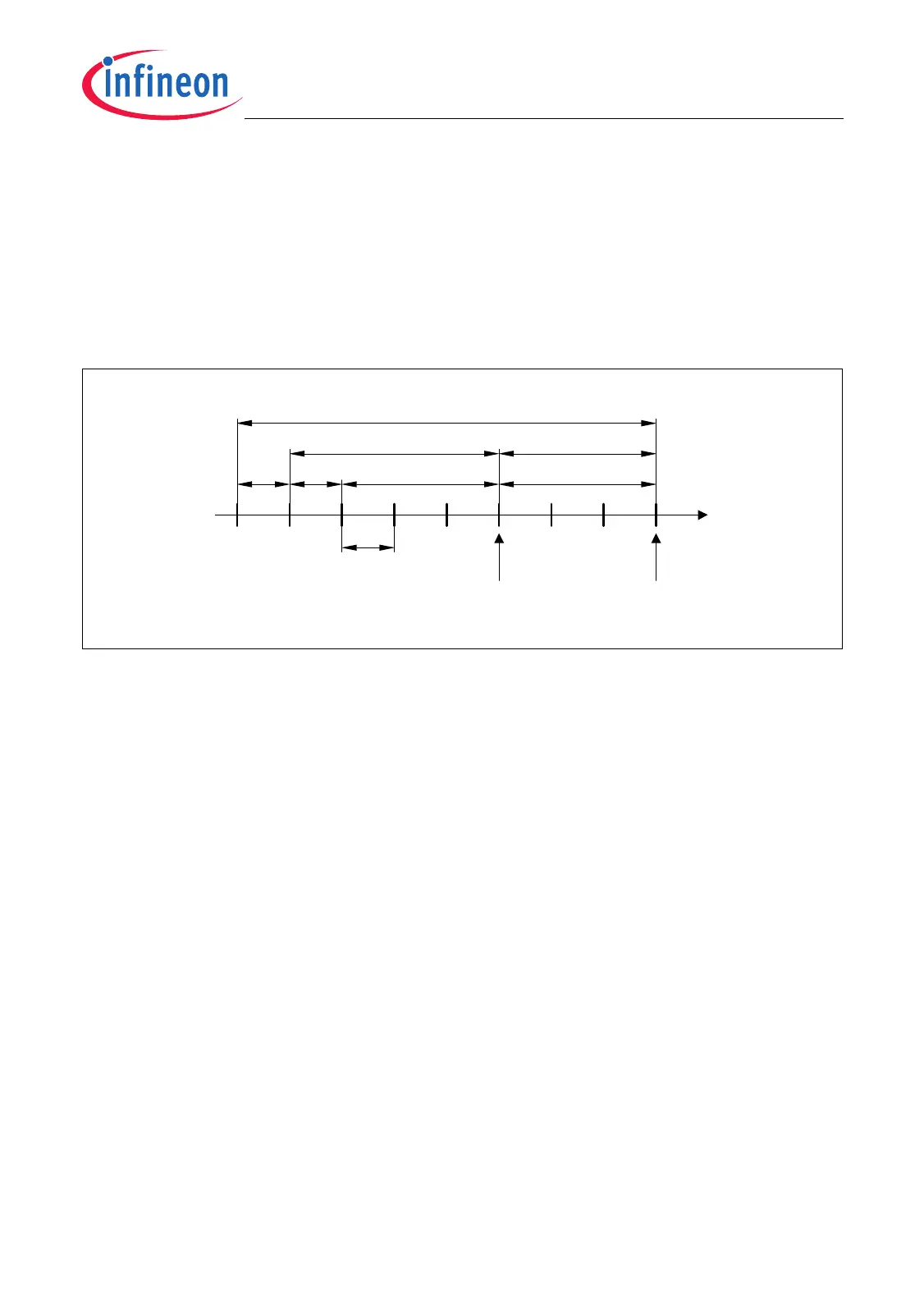TC1796
Peripheral Units (Vol. 2 of 2)
Controller Area Network (MultiCAN) Controller
User’s Manual 22-24 V2.0, 2007-07
MultiCAN, V2.0
22.3.5.1 Bit Timing Unit
According to the ISO 11898 standard, a CAN bit time is subdivided into different
segments (see Figure 22-10). Each segment consists of multiples of a time quantum t
q
.
The magnitude of t
q
is adjusted by Node x Bit Timing Register bit fields NBTRx.BRP and
NBTRx.DIV8, both controlling the baud rate prescaler (register NBTRx is described on
Page 22-84). The baud rate prescaler is driven by the module timer clock f
CAN
(generation and control of f
CAN
is described at Page 22-201).
Figure 22-10 CAN Bus Bit Timing Standard
The Synchronization Segment (T
Sync
) allows a phase synchronization between
transmitter and receiver time base. The Synchronization Segment length is always
one t
q
. The Propagation Time Segment (T
Prop
) takes into account the physical
propagation delay in the transmitter output driver on the CAN bus line and in the
transceiver circuit. For a working collision detection mechanism, T
Prop
must be two times
the sum of all propagation delay quantities rounded up to a multiple of t
q
. The phase
buffer segments 1 and 2 (T
b1
, T
b2
) before and after the signal sample point are used to
compensate for a mismatch between transmitter and receiver clock phase detected in
the synchronization segment.
The maximum number of time quanta allowed for re-synchronization is defined by bit
field NBTRx.SJW. The Propagation Time Segment and the Phase Buffer Segment 1 are
combined to parameter T
Seg1
, which is defined by the value NBTRx.TSEG1. A minimum
of 3 time quanta is demanded by the ISO standard. Parameter T
Seg2
, which is defined by
the value of NBTRx.TSEG2, covers the Phase Buffer Segment 2. A minimum of 2 time
quanta is demanded by the ISO standard. According ISO standard, a CAN bit time,
calculated as the sum of T
Sync
, T
Seg1
and T
Seg2
, must not fall below 8 time quanta.
MCT05836
Sync.
Seg
T
Sync
T
Prop
T
b1
T
b2
T
Seg2
T
Seg1
1 Bit Time
Sample Point Transmit Point
1 Time Quantum (
t
q
)

